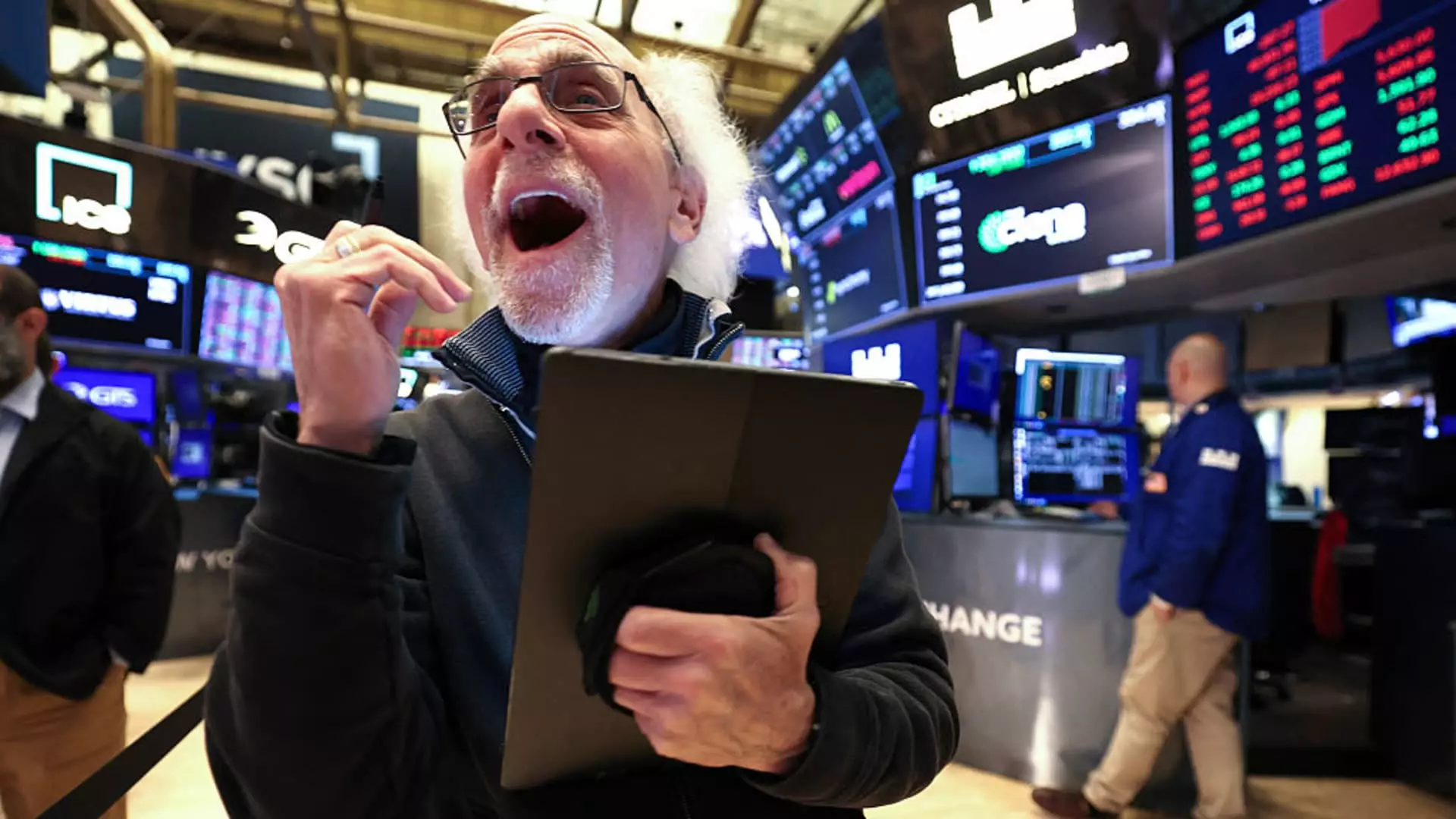In the roller-coaster landscape of 2025, the U.S. stock market has staged an impressive recovery that has left investors both exhilarated and, frankly, a bit uneasy. The S&P 500 and Nasdaq Composite smashed records this past week, with key indices soaring roughly 4% from the prior Friday, reaching levels no one expected after the seismic shocks from early April. Yet, beneath this surface of triumph lies a more complicated narrative—one where exuberance may be masking deep vulnerabilities.
What we’re witnessing is not just a market rebound but a kind of “irrational resilience.” The 24% rally from the April lows seems, on paper, to defy the ongoing uncertainties in trade, monetary policy, and international conflict. But markets are forward-looking by nature, and right now, they appear to be banking on an optimistic continuation of current growth trends despite contradictory signals. This feels less like a confirmation of strength and more like a bet on hope.
The AI Frenzy: Boom or Bubble?
At the heart of this market euphoria is the generative artificial intelligence boom. Semiconductors and cloud computing giants have been the undeniable stars, with Nvidia’s record-breaking valuation eclipsing $3.8 trillion and stocks like Broadcom and Microsoft riding the surge. The technology sector’s rally, fueled by AI hype, looks spectacular but is precariously dependent on continued enthusiasm for AI investments and deployments.
Here’s the catch: the geopolitical chokepoints that sparked earlier fears—especially U.S.-China tensions impacting chip supply chains—haven’t gone away. They’ve merely been sidelined in investor sentiment. The deal between Nvidia and a Saudi AI startup, for example, signals multinational appetite but also exposes the global tech ecosystem’s fragility. Supply disruptions, export controls, or policy shifts could quickly undercut these dazzling valuations. The industrial sector’s beneficiary, GE Vernova, doubling down on data center infrastructure, similarly rides the wave, but its success is tethered to a corner of tech infrastructure that is capital-intensive and vulnerable to economic cycles.
This AI-driven surge might be less about sustainable growth and more about chasing the next big tech story, which historically often ends in sharp corrections.
Defense and Cybersecurity: Safe Havens or Overpriced Bells?
Meanwhile, geopolitical unrest, particularly in the Middle East, has pushed defense and cybersecurity stocks into the spotlight as perceived safe havens. CrowdStrike and Palo Alto Networks have soared, riding waves of investor anxiety over virtual threats and physical conflicts. Yet, this too is where the line between genuine value and speculative frenzy blurs starkly.
The reality of geopolitical risk is being commodified as a kind of investment insurance—stocks in this sector are attractive not for their intrinsic growth potential but as hedges against uncertainty. While some of these firms are genuinely innovating to counter cyber threats, the sector’s elevated valuations make them vulnerable once the current risk premium fades. Investor appetite for “safety” can lead to bloated prices that unravel with a change in the geopolitical winds.
The Fed’s Delicate Dance and Economic Resilience
Federal Reserve Chair Jerome Powell’s recent comments about the economy being “still solid” and the Fed “well positioned to wait” on interest rate cuts have been picked up as green lights for continued market gains. An economy that remains robust amid uncertainty is always a comforting narrative. Still, the risk here is complacency.
Wall Street’s enthusiasm for dealmaking, IPOs, and investment banking—highlighted by Goldman Sachs’ record performance—is a symptom of liquidity and optimism rather than a clear signal of long-term stability. Capital One’s rise, bolstered by its acquisition of Discover, exemplifies this optimistic narrative about consumer spending. But consumer behavior is often the first canary in the economic coal mine, especially in a potentially inflating or over-leveraged environment.
The Fed’s cautious approach is commendable but may also be delaying an inevitable reckoning with inflationary pressures beneath the surface. Until then, markets will likely continue to dance on the edge of optimism, vulnerable to sudden shocks.
Beware the Mirage: What Investors Often Miss
The recent surge in the U.S. stock market, while impressive, feels prematurely celebratory given the backdrop of persistent uncertainty. The narrative leans heavily on a few sectors—AI, defense, and financial services—each riding individual waves of investor optimism that may not be synchronized with broader economic reality.
As a center-wing liberal observer, it’s hard to resist a note of caution against the backdrop of these trends. Markets are complex social ecosystems heavily influenced by political policies, trade dynamics, and global power shifts. The current administration’s tariffs and trade postures, the Fed’s balancing act, and geopolitical conflicts are not background noise—they are active, potent forces shaping the market’s future. Ignoring their long-term impact in favor of short-term gains is a perilous strategy borne more of fear of missing out than sound judgment.
Investors and policymakers alike should be wary of the seductive allure of “record highs” without the foundations of consistent, equitable economic growth. It’s essential to question not only the heights we’ve reached but also the fragility of the ground beneath us. The stock market’s recent performance is not just a testament to resilience—it is also a reminder of how quickly that illusion can shatter.


Leave a Reply